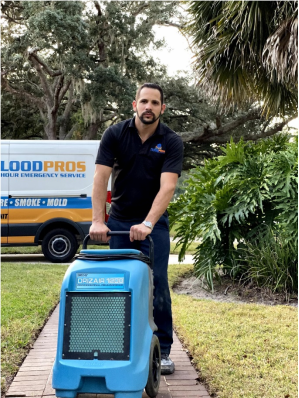
Water damage poses a pervasive threat to homes and buildings, with its effects extending far beyond the visible signs of dampness and structural decay. In regions like Tampa, Florida, where high humidity levels and frequent storms are the norm, the risk of water damage is particularly pronounced. From leaky roofs to flooding during hurricane season, Tampa residents grapple with the constant possibility of water intrusion into their indoor spaces.
Beyond the immediate structural concerns, water damage also raises profound questions about indoor air quality (IAQ) and its implications for human health. IAQ refers to the quality of air within buildings, encompassing factors such as pollutants, humidity levels, and ventilation.
In this blog, let's explore the intricate relationship between water damage, indoor air quality, and human health, focusing specifically on the context of Tampa. By examining the various ways in which water damage can compromise IAQ and exploring its repercussions on health, we aim to shed light on the importance of addressing this pressing issue.
Effects of Water Damage on Indoor Air Quality
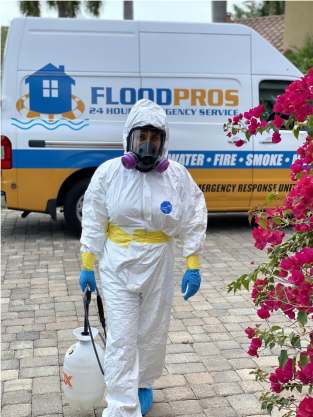
Water damage can have a significant impact on the quality of the air you breathe inside your home. Here's how:
Mold Growth and its Impact on IAQ
Mold thrives in damp environments. Water damage creates the perfect conditions for mold spores, naturally present in the air, to germinate and grow.
Conditions conducive to mold growth:
· Moisture: Mold needs a constant source of moisture to survive. Prolonged dampness from leaks, floods, or condensation promotes rapid mold growth.
· Organic materials: Mold feeds on organic materials like wood, drywall, carpeting, and furniture. Water-damaged areas become prime breeding grounds.
· Warmth: Mold prefers warm temperatures, typically between 68°F and 77°F (20°C and 25°C).
Health risks associated with mold exposure:
Inhaling mold spores can trigger various health problems, especially for those with allergies, asthma, or weakened immune systems. Symptoms may include:
· Respiratory problems: Wheezing, coughing, shortness of breath, and irritation of the airways.
· Allergic reactions: Runny nose, itchy eyes, skin irritation, and headaches.
· Chronic health problems: In severe cases, long-term exposure can lead to respiratory infections, fatigue, and even neurological problems.
Bacterial and Fungal Contamination
Water damage can introduce a variety of bacteria and fungi besides mold into your indoor environment.
Sources of bacteria and fungi in water-damaged environments:
· Sewage contamination: Sewage backups or overflows can introduce harmful bacteria and fungi into your home.
· Standing water: Stagnant water provides a breeding ground for bacteria and fungi, especially in areas like flooded basements or beneath carpets.
· Contaminated materials: Building materials that get wet can harbor bacteria and fungi, even after they appear dry.
Health Risks Associated with Poor Indoor Air Quality
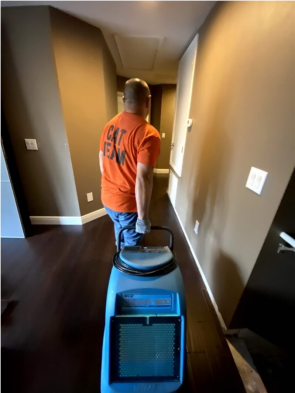
Breathing in polluted air indoors can have a significant impact on your overall health and well-being. Here's a closer look at some of the common health risks associated with poor indoor air quality:
Respiratory Issues
Poor indoor air quality can irritate and inflame the respiratory system, leading to a variety of breathing problems.
· Asthma Exacerbation: People with asthma are particularly susceptible to the effects of indoor air pollutants. Exposure can trigger asthma attacks, characterized by wheezing, coughing, shortness of breath, and chest tightness.
· Allergic Reactions: Indoor allergens like dust mites, pet dander, and mold spores can cause allergic reactions in many individuals. Symptoms may include runny nose, itchy eyes, sneezing, and congestion. Additionally, exposure to certain irritants like volatile organic compounds (VOCs) can trigger allergic-like reactions, such as headaches and difficulty breathing.
Tampa's Vulnerability to Water Damage and IAQ Issues
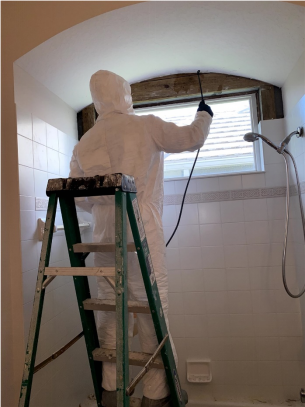
Tampa's idyllic climate, with its sunshine and proximity to the water, comes with a hidden threat: a high vulnerability to water damage and its associated indoor air quality (IAQ) issues. Here's a closer look at the specific factors that contribute to this challenge:
Climate Factors Contributing to Water Damage
High Humidity Levels: Tampa boasts subtropical humidity, averaging around 70% year-round. This creates a constantly damp environment where moisture readily condenses on surfaces and readily seeps into building materials. This constant moisture can lead to:
· Mold Growth: As discussed earlier, high humidity provides the perfect breeding ground for mold spores to germinate and thrive. Mold growth can occur on walls, ceilings, furniture, and inside HVAC systems, compromising air quality.
· Structural Damage: Over time, persistent moisture can weaken building materials like wood framing, drywall, and insulation. This can lead to cracks, leaks, and potential water damage from even minor plumbing issues or roof leaks.
Frequent Storms and Flooding: Tampa Bay experiences a wet season from May to October, coinciding with the peak of hurricane season. This translates to:
· Heavy Rainfall: Intense downpours can overwhelm drainage systems, leading to flash flooding in low-lying areas and potential foundation leaks in buildings.
· Storm Surge and Coastal Flooding: Hurricanes and tropical storms can bring strong storm surges that cause coastal flooding. This can inundate basements, crawl spaces, and even first floors, leading to significant water damage.
· Sewage Backups: Heavy rainfall can overload sewage systems, causing backups into homes, introducing harmful bacteria and fungi into the indoor environment.
Structural Vulnerabilities in Tampa Homes and Buildings
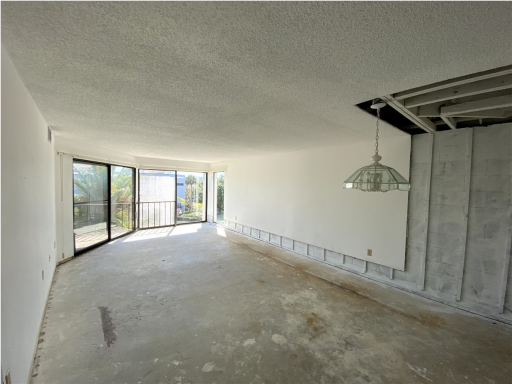
Beyond the challenges posed by the climate, certain characteristics of Tampa's building stock contribute to its vulnerability to water damage:
Older Construction Prone to Leaks: Many parts of Tampa boast historic neighbourhoods with older homes. While charming, these homes may have:
· Deteriorating Roofs: Aging roofs with worn-out shingles or flashing become more susceptible to leaks during heavy rains or windstorms.
· Outdated Plumbing: Older plumbing systems might have worn-out pipes or faulty connections, increasing the risk of leaks and potential water damage.
· Lack of Modern Moisture Barriers: Building materials and practices in older homes might not have the same level of moisture control features as newer constructions, making them more susceptible to water intrusion.
Impact of Hurricanes and Tropical Storms: The frequent threat of hurricanes and tropical storms necessitates specific construction considerations:
· Wind Damage: High winds can cause roof damage, leading to leaks and water intrusion. Additionally, windblown debris can damage windows and siding, creating new entry points for water.
· Storm Surge Damage: Coastal properties face the additional threat of storm surge flooding, which can overwhelm foundations and cause significant structural damage, potentially exposing entire buildings to floodwater.
Facing water or storm damage in Tampa? Trust Flood Pros USA for immediate, 24/7 assistance! Our certified experts offer professional emergency water damage cleanup, swift flood restoration, and comprehensive storm damage repair services. With free inspections, a lifetime warranty, and a 100% satisfaction guarantee, we ensure your peace of mind. From residential to commercial properties, we handle it all. Don't wait!
Call now for expert restoration after storm damage and efficient flood damage repairs in Tampa.
Subscribe to Flood Pros USA's Blog


Comments